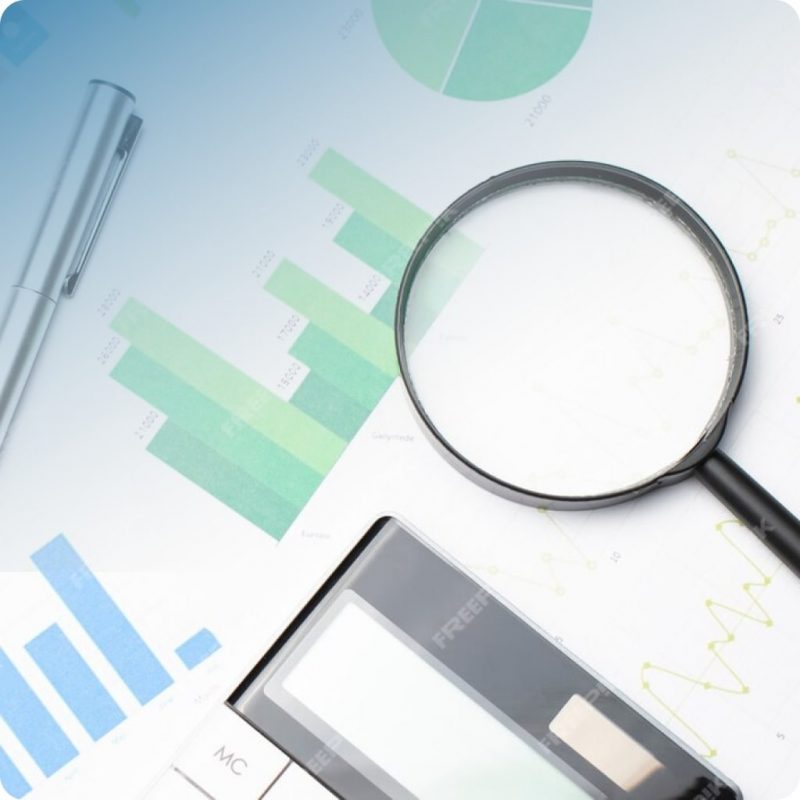In today’s data-driven world, businesses that thrive harness the power of market research. While primary research involves collecting data firsthand, secondary market research leverages existing data to provide valuable insights without the hefty costs. Entrepreneurs, small business owners, and business students alike must understand the intricacies of market research. Let’s explore how secondary market research can be your key to success.
What Is Secondary Market Research?
Secondary market research is the process of collecting and analyzing data that has already been gathered by others. This information can come from a variety of sources, including government agencies, industry associations, market research firms, and academic institutions. Unlike primary research, which involves collecting data firsthand, secondary research leverages existing information to gain insights into a specific market.
Key benefits of secondary market research include:
- Cost-effective: Often less expensive than primary research as it avoids the costs associated with data collection.
- Time-saving: Existing data is readily available, reducing the time required to gather information.
- Access to large datasets: Provides access to extensive data that might be difficult or impossible to collect independently.
- Industry benchmarks: Offers comparisons to industry standards and trends.
By utilizing secondary market research, businesses can make informed decisions, identify market opportunities, understand customer behavior, and develop effective marketing strategies.
Secondary Market Research Sources
Secondary market research offers a wealth of information, but knowing where to look can be overwhelming. Here’s a breakdown of key sources:
Government Data
Government agencies collect and publish a vast amount of data on demographics, economic indicators, industry trends, and consumer behavior. This data is often free and highly reliable. The following examples are applicable for the US.
- Census Bureau: Provides comprehensive data on population, housing, business, and economy.
- Bureau of Labor Statistics (BLS): Offers data on employment, wages, prices, and productivity.
- Federal Trade Commission (FTC): Provides information on consumer protection and antitrust issues.
Industry Associations and Trade Organizations
Industry-specific associations often publish market research, statistics, and trends relevant to their members.
- National Retail Federation (NRF): Offers data and insights on the retail industry.
- Marketing Association (AMA): Provides resources and research on marketing topics.
Market Research Firms
These companies specialize in collecting and analyzing market data. Their reports often provide in-depth insights into specific industries or consumer segments.
- Statista: Offers a vast collection of market data, studies, and infographics.
- Mintel: Provides market research on consumer goods and services.
- Nielsen: Offers data and analytics on consumer behavior and media consumption.
Academic Research
Universities and research institutions publish studies and papers on various topics, including market research.
- Google Scholar: A search engine for academic literature.
- JSTOR: A digital library of academic journals, books, and primary sources.
Business Databases
Many databases offer access to company information, industry reports, and news articles.
- Bloomberg Terminal: Provides financial data, news, and analytics.
- Factiva: Offers news and business information from thousands of sources.
Other Online Resources
The internet provides a wealth of free and paid secondary research data.
Social Media: Platforms like Facebook, Twitter, and Instagram offer insights into consumer sentiment and behavior.
Industry Websites and Blogs: Many companies and industry experts publish valuable information online.
Considerations When Using Secondary Data
When conducting research, it is crucial to ensure relevance by verifying that the data aligns with your research question. Equally important is reliability, which involves confirming the credibility and accuracy of your sources. Additionally, consider the timeliness of the data, taking into account its age and current applicability. Lastly, ensure consistency by comparing data from multiple sources to verify uniformity.
By carefully selecting and utilizing these sources, you can gather valuable insights to inform your market research and decision-making processes.
Secondary Market Research Methods
Conducting secondary market research involves several methods, each tailored to the type of data being analyzed. Here are some common methods along with examples to provide greater context:
Data Mining
This involves uncovering patterns within substantial datasets. By employing statistical algorithms and machine learning, researchers can extract valuable insights. This method is instrumental in identifying customer segments, forecasting sales trends, detecting anomalies, and optimizing marketing strategies.
Example: Imagine a retail company that uses data mining to analyze its sales data over the past five years. By examining patterns in purchase history, customer demographics, and seasonal trends, they identify a growing segment of eco-conscious millennials who prefer sustainable products. This insight leads to the development of a new product line targeting this specific customer segment.
Content Analysis
Content analysis systematically examines communication to understand its meaning. Applicable to textual, visual, or audio data, content analysis helps analyze media coverage, gauge brand perception, identify consumer sentiment, and track industry trends.
Example: A social media marketing firm conducts content analysis on Twitter mentions of a client’s brand. By analyzing the language, sentiment, and context of these tweets, they discover that customers frequently praise the product’s durability but express frustration with its packaging. This information guides the company to improve its packaging design while maintaining product quality.
Trend Analysis
This type of analysis identifies patterns and shifts in data over time. It aids in predicting future trends and making informed decisions. By analyzing historical data, businesses can forecast market growth, recognize emerging trends, assess the competitive landscape, and develop long-term strategies.
Example: An electric vehicle manufacturer performs trend analysis on global sales data of electric cars over the past decade. They notice a consistent year-over-year increase in sales, with a significant spike in regions that have implemented green energy incentives. This information helps them prioritize market expansion in areas with favorable policies and growing demand.
Competitive Analysis
Competitive analysis evaluates the strengths, weaknesses, opportunities, and threats of competitors. Understanding the competitive landscape is crucial for developing effective strategies. Through benchmarking performance, identifying market gaps, and differentiating products, businesses can gain a competitive edge.
Example: A streaming service conducts a competitive analysis of other platforms in the market. They discover that while a major competitor has a larger content library, users complain about its confusing interface. The streaming service decides to focus on improving its user experience and curating a smaller but high-quality content selection to differentiate itself.
Benchmarking
Benchmarking compares a company’s performance to industry standards or best practices. It helps identify areas for improvement and set performance goals. By assessing operational efficiency, measuring customer satisfaction, and evaluating product quality, companies can enhance their processes.
Example: A mid-sized hospital benchmarks its patient satisfaction scores against top-performing hospitals in the country. They find that their scores lag in the areas of wait times and staff communication. Using this information, the hospital implements new scheduling software and staff training programs to improve in these areas.
SWOT Analysis
This well-known acronym is a strategic planning technique that identifies a company’s strengths, weaknesses, opportunities, and threats. It assesses the internal and external environment. By developing business strategies, identifying competitive advantages, mitigating risks, and allocating resources effectively, companies can improve their overall performance.
Example: A local coffee shop chain conducts a SWOT analysis before expanding to a new city. They identify their strength in sourcing high-quality, ethically produced beans, and their weakness in brand recognition outside their home market. Opportunities include a growing demand for specialty coffee in the target city, while threats include established national chains. This analysis helps them develop a market entry strategy that emphasizes their unique selling points.
Scenario Planning
Scenario planning creates hypothetical future scenarios to assess potential outcomes and develop contingency plans. It helps businesses develop strategic options, manage risks, identify opportunities, and make informed decisions in uncertain environments.
Example: An international airline uses scenario planning to prepare for various post-pandemic travel scenarios. They develop plans for rapid recovery, slow recovery, and potential new travel restrictions. This exercise helps them adjust their fleet management, route planning, and staffing strategies to remain flexible in an uncertain market.
These methods often complement each other to maximize the value extracted from secondary data. By applying these techniques, businesses can gain valuable insights, make data-driven decisions, and achieve a competitive advantage.
Advantages of Secondary Market Research
Secondary market research offers several benefits for businesses and researchers:
- Cost-effective: It is generally less expensive than primary research as data is already collected and available.
- Time-efficient: Since data is readily accessible, researchers can gather information quickly, accelerating the research process.
- Access to large datasets: Secondary research often provides access to extensive datasets that would be challenging or impossible to collect independently.
- Industry benchmarks: This research allows for comparisons to industry standards and trends, providing valuable context.
- Reduced errors: Data collected by professionals can be more reliable and accurate than data gathered independently.
- Identification of research gaps: By exploring existing research, researchers can identify areas where further investigation is needed.
- Understanding the broader context: Secondary research helps place specific findings within a larger industry or market context.
- Supports primary research: It can provide a foundation for designing effective primary research studies.
By leveraging secondary market research, businesses can make informed decisions, identify opportunities, understand customer behavior, and develop effective marketing strategies.
Limitations of Secondary Research
While secondary market research offers numerous advantages, it also has its drawbacks:
- Lack of specificity: The data may not align precisely with the specific research question or business needs.
- Outdated information: Data can become outdated quickly, especially in rapidly changing markets.
- Data quality and reliability: The accuracy and consistency of data can vary across sources.
- Limited depth: Secondary research often provides a broad overview but may lack in-depth insights.
- Potential bias: The original data collection methods or the interpretation of the data may be biased.
- Access limitations: Some high-quality data sources may require subscriptions or fees.
- Competitive advantage: Information available to one company is often available to competitors as well.
It’s essential to carefully evaluate the limitations of secondary research and consider combining it with primary research to obtain a more comprehensive understanding of the target market.
Examples of Secondary Market Research
To illustrate the practical applications of secondary market research, let’s consider a few examples:
Business Examples
Coca-Cola’s Market Penetration: Coca-Cola extensively uses demographic data from census bureaus to understand consumer preferences and consumption patterns across different regions. This information helps them tailor their marketing campaigns and product offerings.
Netflix’s Content Strategy: Netflix relies heavily on viewing data and audience preferences to determine which shows and movies to produce or acquire. By analyzing user behavior, they can identify popular genres and create content that resonates with their audience.
Amazon’s Product Recommendations: Amazon utilizes customer purchase history and browsing behavior to suggest products to customers. This data-driven approach significantly influences consumer purchasing decisions.
Academic Examples
Climate Change Research: Scientists use government reports, academic papers, and satellite data to study climate patterns, predict future trends, and inform policy decisions.
Economic Forecasting: Economists rely on GDP data, employment statistics, and consumer spending patterns to forecast economic growth or recession.
Public Health Studies: Researchers use health records, epidemiological data, and government statistics to identify disease outbreaks, track health trends, and evaluate public health interventions.
Other Examples
Government Policy Making: Governments use census data, economic indicators, and social surveys to inform policy decisions on education, healthcare, and infrastructure.
Market Research Firms: Companies like Nielsen and Kantar collect and analyze consumer data to provide insights to businesses for market segmentation, product development, and advertising.
These examples highlight how secondary market research is used across various sectors to make informed decisions, develop strategies, and understand market trends.
Tips for Effective Secondary Market Research
Conducting effective secondary market research requires a systematic approach. Here are some tips:
Define Your Research Objectives Clearly
To conduct effective research, it’s crucial to clearly outline your objectives. Specificity in what you aim to achieve will guide your efforts, while ensuring that your research questions align with your business goals will maintain relevance throughout the process.
Identify Reliable Sources
Reliability is key in research, so prioritize sources with a strong reputation for accuracy. It’s also important to use a diverse range of sources to cross-verify information and ensure that the data you gather is current and relevant to your research.
Critically Evaluate Information
As you gather information, be mindful of potential biases that may affect the data. Consistency is vital, so compare information from different sources to identify any discrepancies. Additionally, consider the depth of the information provided to ensure a comprehensive understanding.
Organize and Analyze Data
Creating a structured system to organize your collected data is essential for effective analysis. Synthesize information from various sources to identify patterns and trends, and employ visualization techniques such as graphs and charts to represent your data clearly.
Leverage Technology
Take advantage of online databases to access a wide range of information. Utilize data analysis tools to efficiently analyze large datasets, and keep an eye on social media for insights into consumer sentiment.
Triangulation
To strengthen your findings, use data from multiple sources. Cross-verify the information you gather to ensure accuracy and reliability. By following these tips, you can maximize the value of secondary market research and make informed decisions.
Conclusion
Secondary market research is a powerful tool that can provide valuable insights for businesses, entrepreneurs, and professionals. By leveraging existing data, you can save time and resources while gaining a comprehensive understanding of the market landscape.
Whether you are looking to enter a new market, analyze competitors, or understand customer preferences, secondary market research offers a wealth of information to guide your decisions. Remember to use reliable sources, define clear objectives, and critically analyze the data to make the most of your research efforts.
Ready to take your market research to the next level? Start exploring the wealth of secondary data available and unlock new opportunities for your business.
For those seeking personalized guidance, consider booking a consultation with one of our market research experts. Together, we can help you harness the power of secondary market research to achieve your business goals.




